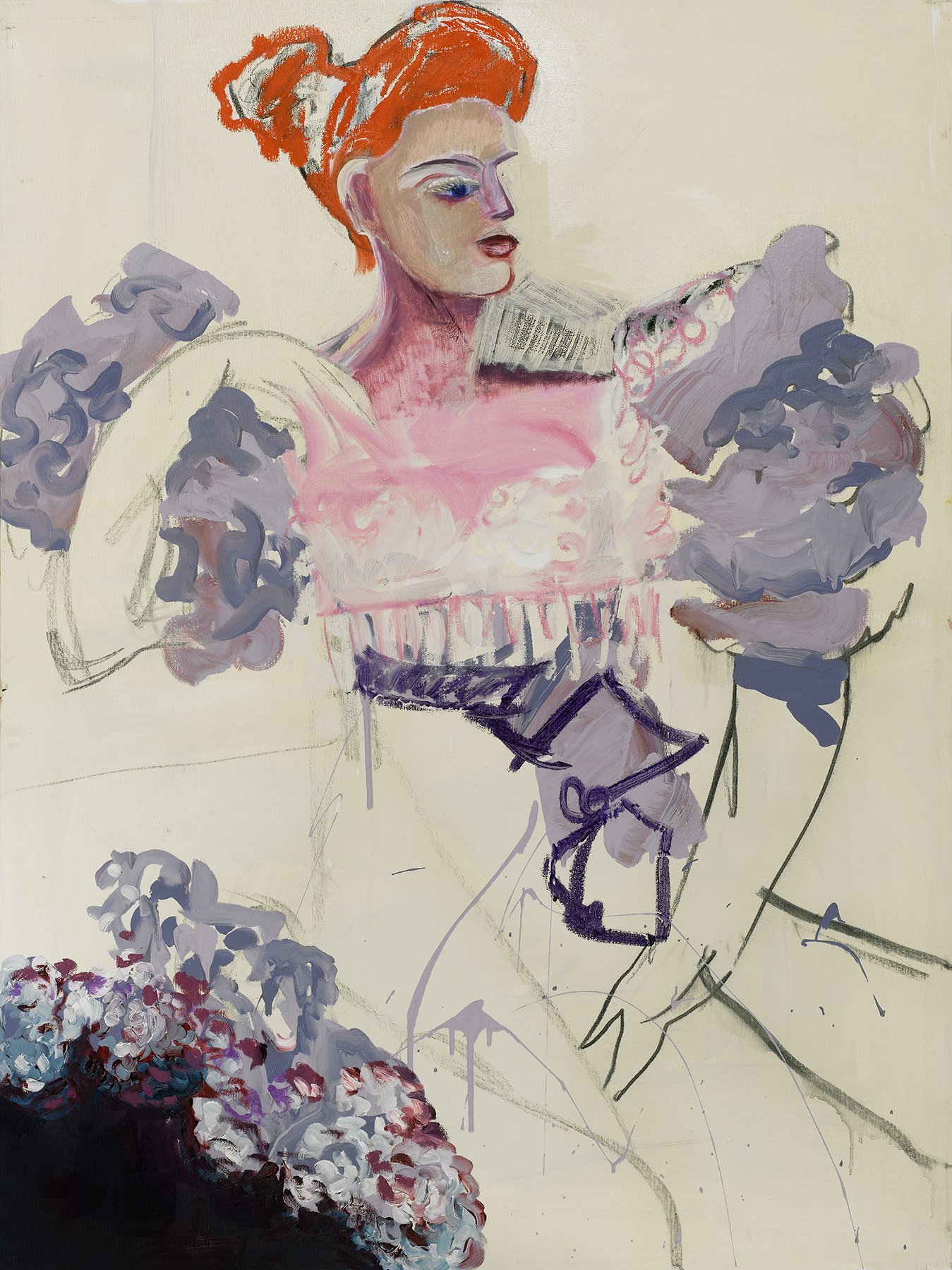

Claudia Doring Baez is a master of the meta-image. Throughout her career, she has found inspiration in existing images, which she then channels through her own idiosyncratic lens.
-Phoebe Hoban, Journalist, Art biographer

Claudia’s paintings are animated by a reverence for art history and literature, rendered in a contemporary, expressionistic vocabulary. She engages in conversations with the work of some of the great artists from the past centuries that she resonates with — selects, re-creates, and adopts details from images to create her own language.





Claudia Doring-Baez’s recent paintings depart from the French director Alain Renais’s 1961 film Last Year at Marienbad, with its enigmatic screenplay by Alain Robbe-Grillet. Doring-Baez’s engagement with this icon of Nouvelle Vague cinema follows her series inspired by Cindy Sherman’s Film Stills and Marcel Proust’s In Search of Lost Time. Last Year at Marienbad evokes an encounter between a man and woman who may or may not have met before, overseen by a third man, told through a dream-like blurring of fact and fiction. Doring-Baez knows the film well and has done extensive research into it, even exploring an obscure Argentine novel whose fundamental idea seems related to Robbe-Grillet’s. Her paintings are based on stills from the film, chosen as essential to its emotional affect and elusive narrative. Doring-Baez filters the stills’ images through her own recollections and translates them into a non-literal language of broad painterly gestures.
Using selected images from Last Year in Marienbad as starting point distances Doring-Baez from actuality, both because of the fiction of cinema and because of the intermediary stage of the stills. This double remove seems liberating, allowing her to treat key images from the film – a bedroom scene, a characteristic gesture of the woman, a view from a balcony – without concern for fidelity to actual appearances. She exaggerates the compression inherent in her photographic sources, plays with scale and spatial relationships, simplifies and stylizes, and sometimes transforms black and white into raucous color. In one large painting, she combines figures almost irrationally, like an old fashioned (pre-Nouvelle Vague) movie poster. Just as the film ignores conventional narrative logic, Doring-Baez ignores the sequence of the film, making us invent new connecting narratives when we see her Last Year at Marienbad paintings as a group. We recognize elements from the film – topiary trees, the protagonists disappearing down a corridor – but ultimately, our attention is held by Doring-Baez’s bold drawing, her energetic paint handling, and, in her strongest works, her heightening of the strangeness of remembered but familiar images – at least to fans of French cinema.
Karen Wilkin, curator and critic | New York, February 2018


